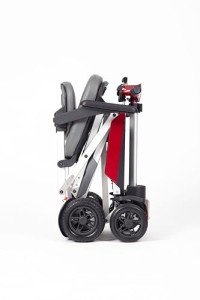The Best Mobility Devices Methods To Change Your Life
Understanding Mobility Devices: Enhancing Independence and Quality of Life
In today's fast-paced world, the desire for mobility is universal. However, certain medical conditions or age-related challenges can prevent motion, resulting in a continuous look for help. Mobility devices serve as important tools to boost independence, enhance lifestyle, and allow individuals to engage fully in their neighborhoods. This short article supplies a thorough overview of mobility devices, including their types, functions, choice requirements, and more.
Kinds Of Mobility Devices
Mobility devices range from basic aids to complicated equipment, tailored to satisfy various needs. Below is a table summing up common kinds of mobility devices:
Type of Device
Description
Suitable For
Walkers
Four-legged support devices that provide remarkable stability while strolling.
Individuals needing additional support.
Canes
Single or three-legged sticks that enhance balance and support walking.
Those with minor mobility problems.
Wheelchairs
Seats mounted on wheels, available in handbook and electric versions.
Individuals with restricted or no mobility.
Scooters
Electric vehicles developed for outside use and ease of navigation.
Those who can't walk cross countries.
Crutches
Devices that help individuals transfer weight far from a hurt leg.
Individuals recuperating from leg injuries.
Rollators
Walkers with wheels, seats, and brakes for enhanced mobility.
Users requiring rest alternatives while walking.
Raise Chairs
Reclining chairs that help users in standing up and taking a seat.
Seniors or those with mobility restrictions.
Mobility Scooters
Small electric cars for minimal mobility, frequently utilized outdoors.
Individuals requiring support over cross countries.
Key Features of Mobility Devices
When picking a mobility gadget, numerous key functions need to be thought about to make sure optimal performance and ease of use:
- Weight Capacity: Understanding the gadget's weight limitation is essential for safety and effectiveness.
- Adjustability: Devices should be adjustable in height and width to fit the user conveniently.
- Portability: Lightweight and foldable alternatives are vital for users who travel or need transportation.
- Stability and Safety: Look for functions like anti-tip wheels and sturdy structures to enhance security.
- Ease of Use: Simple mechanisms and easy to use designs can make a considerable distinction in everyday usage.
- Convenience: Ergonomic designs and cushioned seats can boost the user experience.
Picking the Right Mobility Device
Choosing the ideal mobility gadget can be a challenging task. Here are some actions to guide the decision-making procedure:
- Assess Needs: Evaluate the person's mobility obstacles and day-to-day activities.
- Speak with a Professional: Engage health care experts who can supply suggestions based on the individual's physical condition.
- Trial Options: If possible, trial different devices to determine convenience and performance.
- Evaluation Budget: Consider the expense of the device, including any additional features or modifications required.
- Research study Options: Determine the best brands and models by reading reviews and comparisons.
Table: Comparative Analysis of Popular Mobility Devices
Device
Advantages
Drawbacks
Walkers
Exceptional stability, promotes strolling.
Large, may limit movement in small spaces.
Canes
Lightweight, boosts balance.
May not supply adequate support for severe mobility problems.
Wheelchairs
Perfect for those with considerable mobility constraints.
Can be troublesome, specifically in indoor environments.
Scooters
Great for outside use, easy to maneuver.
Limited indoor use, heavier.
Rollators
Offers rest alternative, easy to move.
May require more area than traditional walkers.
Raise Chairs
Comfortable, assists shift from sitting to standing.
More pricey, bigger footprint.
Frequently Asked Questions (FAQs)
1. What is a mobility device?
A mobility gadget is any tool designed to help individuals in moving and navigating their environment. This consists of walkers, wheelchairs, scooters, and crutches.
2. How do I know which mobility gadget is best for me?
Consider your specific mobility obstacles, physical capabilities, and way of life requirements. Consulting with healthcare experts can also provide tailored recommendations.
3. Are mobility devices covered by insurance?
Lots of insurance coverage plans, including Medicare, might cover certain mobility devices. It's crucial to talk to your insurance coverage provider for particular coverage details.
4. Can simply click the up coming website rent a mobility gadget rather of purchasing one?
Yes, many medical supply stores and drug stores offer rentals for mobility devices. This alternative is beneficial for individuals with short-term mobility problems.
5. How can I preserve my mobility gadget?
Routine upkeep is important. It consists of cleaning the device, inspecting for wear and tear, and guaranteeing all parts are working properly.
The Impact of Mobility Devices on Quality of Life
Mobility devices substantially improve the lifestyle for people with limited mobility. They promote self-reliance, encourage social interaction, and boost access to important services and leisure activities.
- Increased Independence: Users can navigate their areas, attend events, and engage in hobbies without relying on others.
- Social Engagement: Mobility devices help with involvement in celebrations, thus combating feelings of isolation.
- Boosted Safety: Devices supply stability and minimize the risk of falls, promoting user self-confidence.
Mobility devices are more than simply tools for motion; they are entrances to independence and quality living. By understanding the various kinds of mobility aids available, their key features, and considerations for selecting the best device, individuals can make informed choices about their mobility requires. Ultimately, the best mobility device can result in a more active, fulfilling life. Whether it's a walker, wheelchair, or scooter, the ideal option contributes substantially to enhancing the mobility and independence of users.
